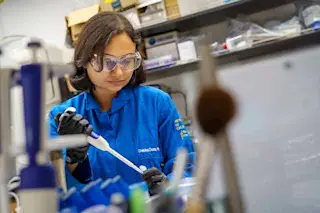Also see one writer's account of the dozens of plastic objects she encounters every day—all before lunch.
Years ago, I profiled a theater designer who had just created 200 sumptuous costumes from garbage bags. Green, rose, black, white, sky blue, and see-through—the plastic was pliable and it pleated, flounced, puffed, fluffed, and glowed with reflected light. The title of that long-ago theater production was 33 Scenes on thePossibility of Human Happiness. From trash to the sublime, plastic was cheap, durable, endlessly protean, and astonishingly beautiful. Christo would agree.
How could that loveliness be linked to what seems its ugly opposite: the contortions and distortions that chemicals in plastic may have bequeathed us? The stunted testicles in fish and alligators; girls blooming breasts and pubic hair at an eerily young age; the steadily rising numbers of human males born with abnormal urethras; climbing rates of testicular and breast cancer; declining sperm ...














